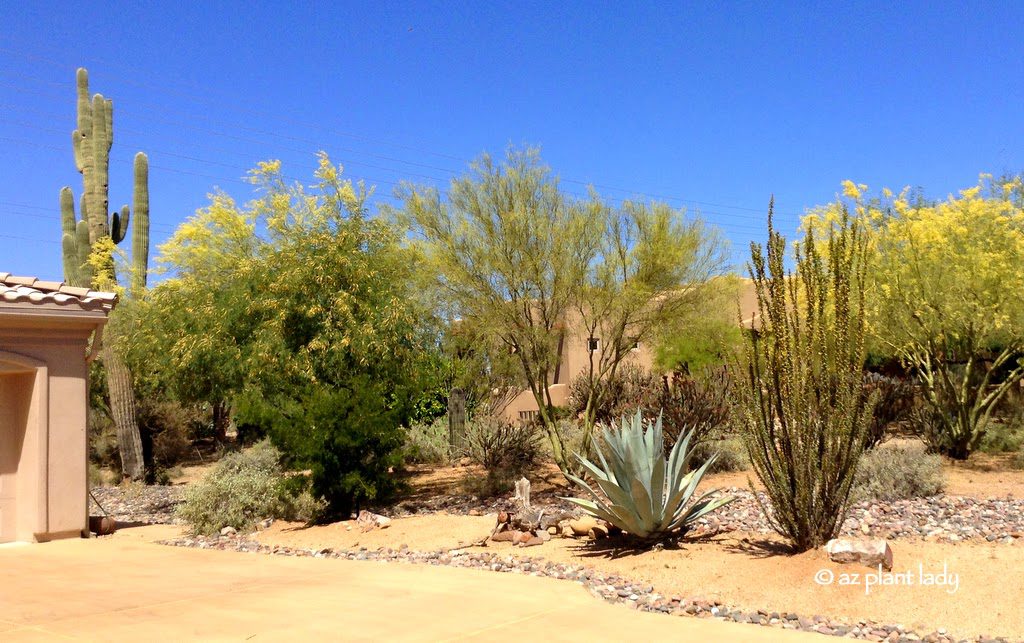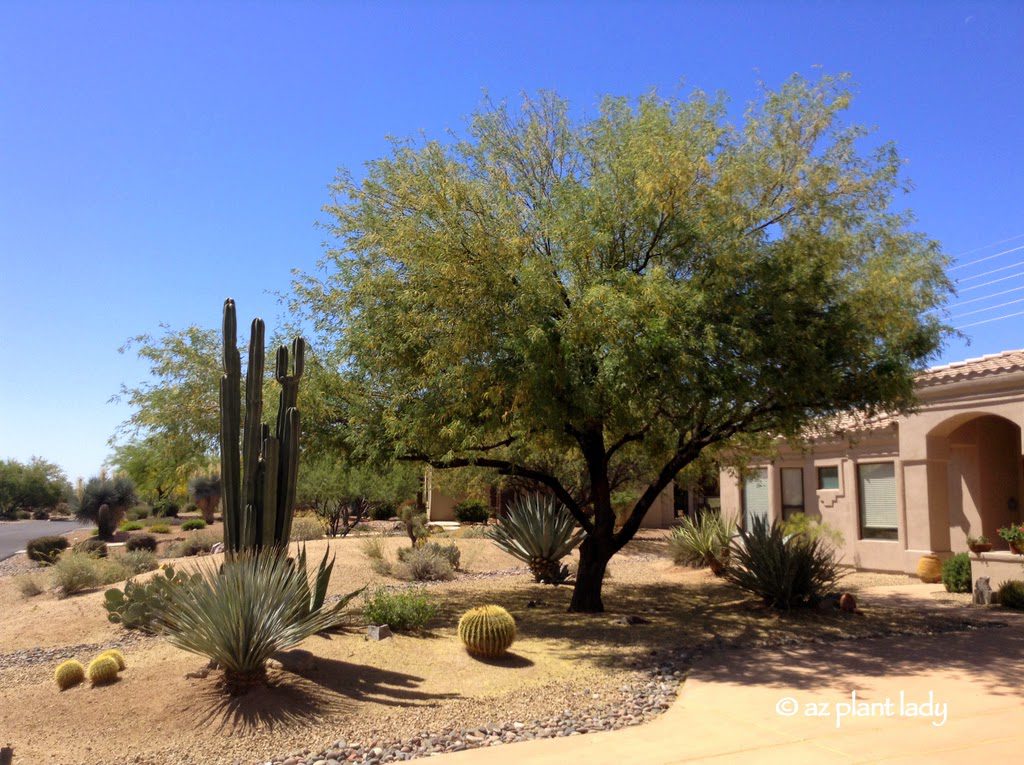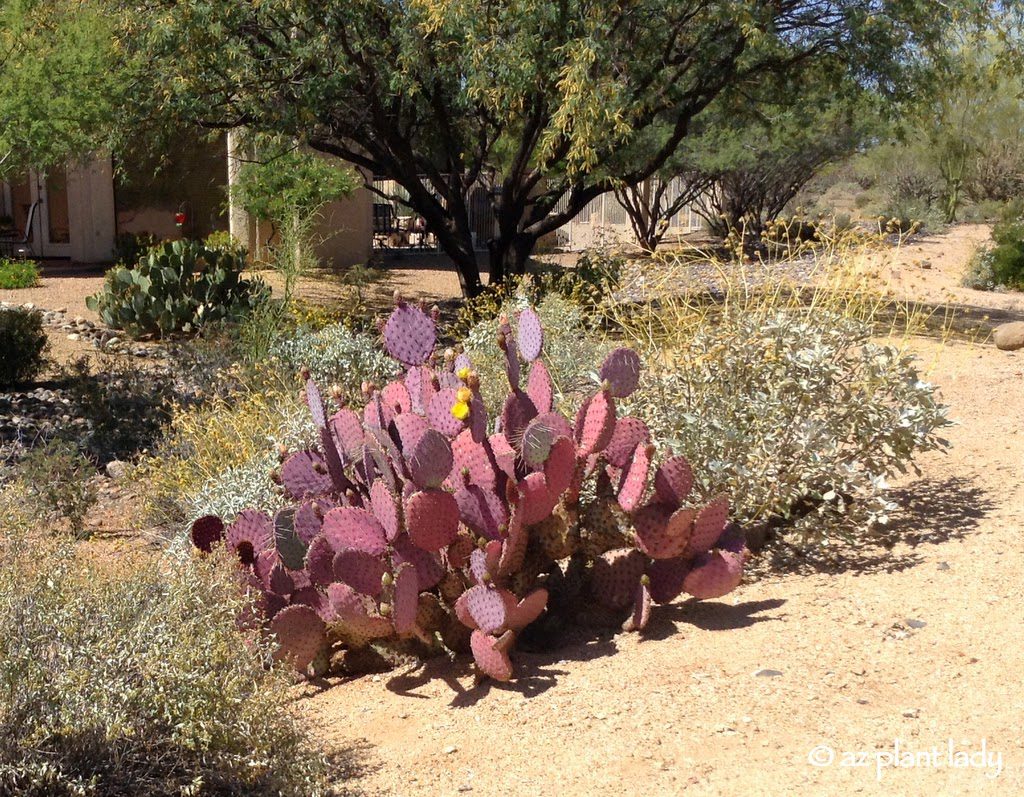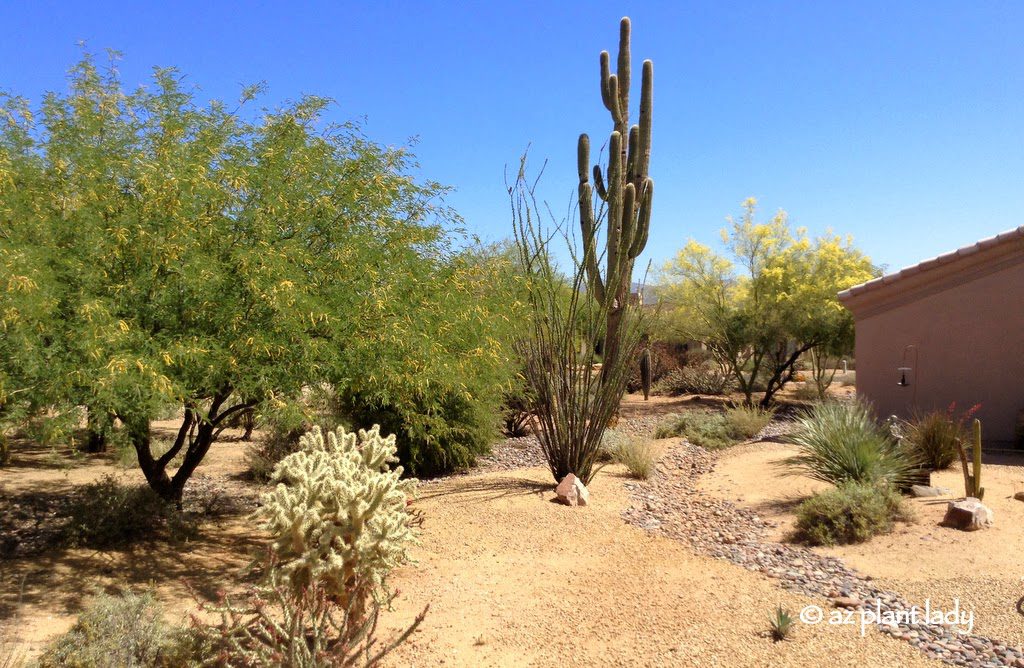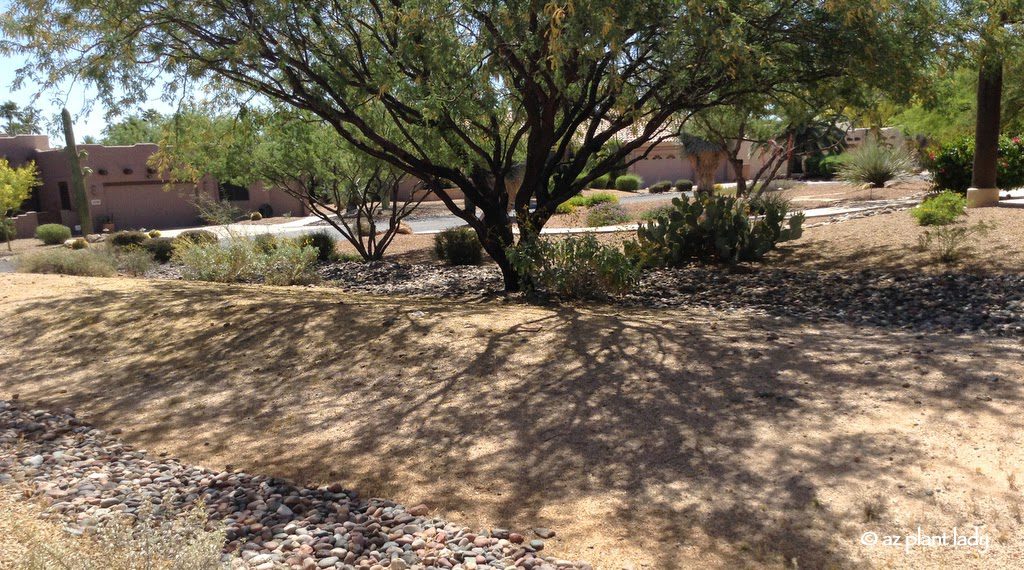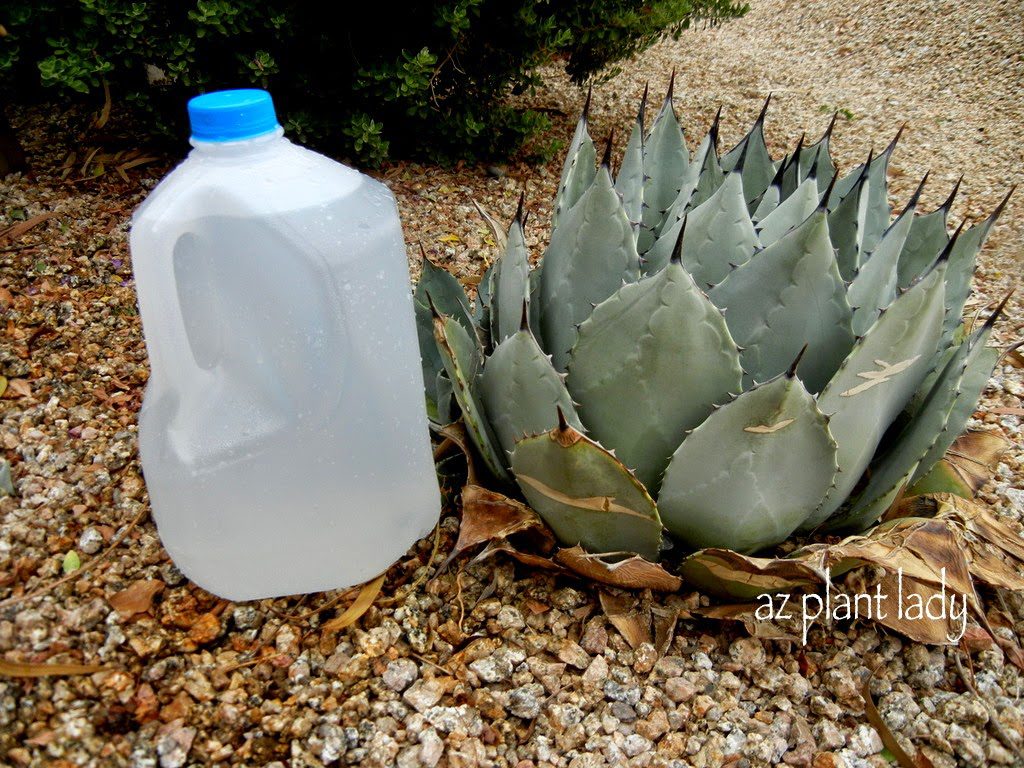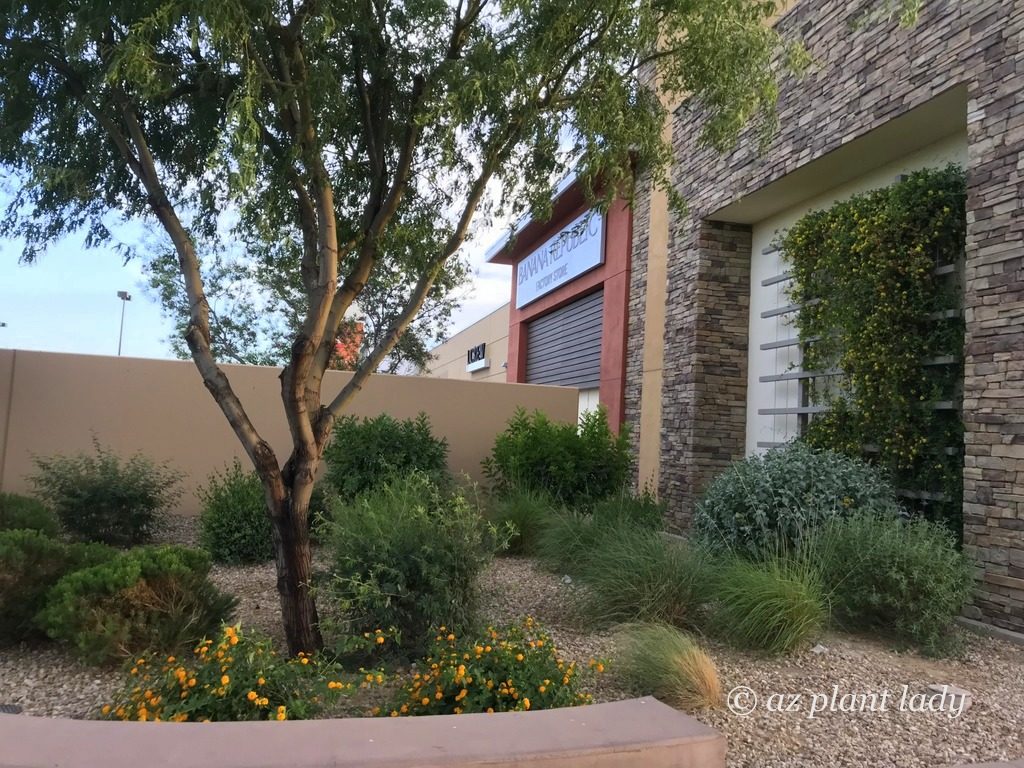
Standing Out in a Sea of Sameness: A Well-Designed Natural Landscape
Have you noticed that landscapes around parking lots and shopping malls look somewhat lackluster? This is often due to a combination of over-pruning, over-planting, and the wrong plant in the wrong place.
Sadly, this is so commonplace. A beautifully designed and well-maintained landscape stands out as a shiny diamond.
A Pleasant Surprise: Native Plants and Natural Shapes
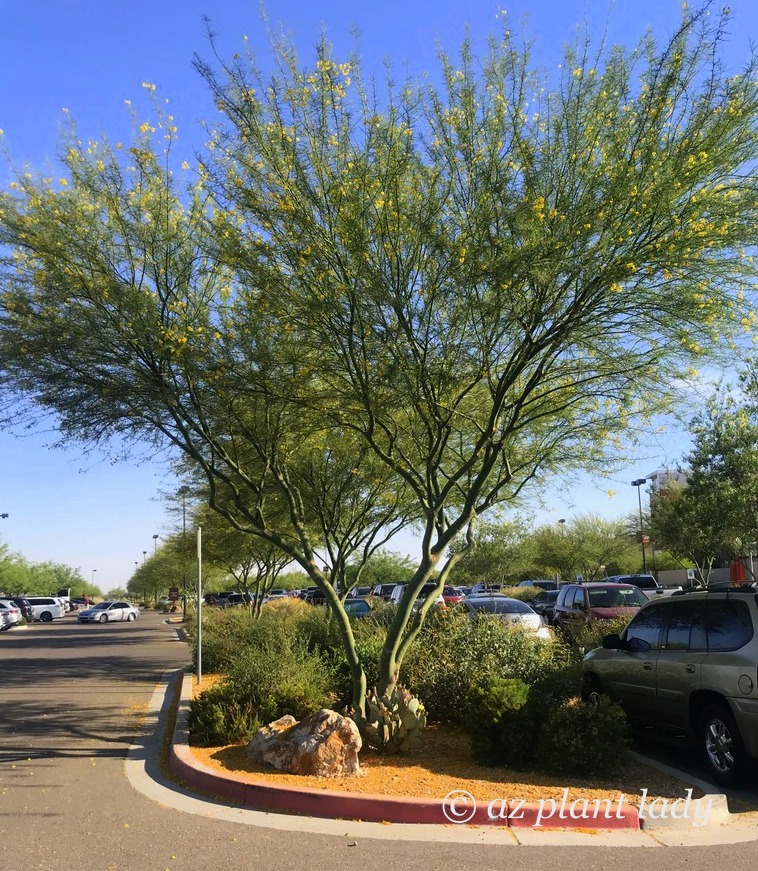
My husband and I went to our local outlet mall to buy some clothes for him. I hadn’t walked more than a couple of steps when I realized that something was wrong. Well… actually right! The parking lot islands have shrubs that are spaciously planted and not pruned into round balls and cupcake shapes.
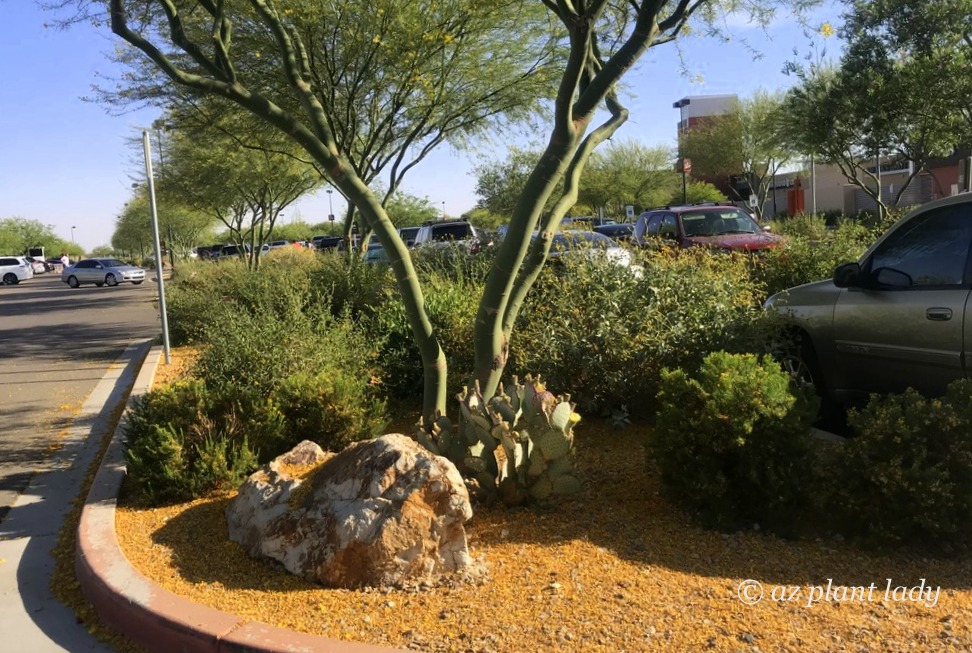
Most of the plants were native plants. The landscape grows together attractively and in natural shapes. This begs the question, who created a rule that plants can’t touch each other?
Colorful Desert Shrubs and Perennials
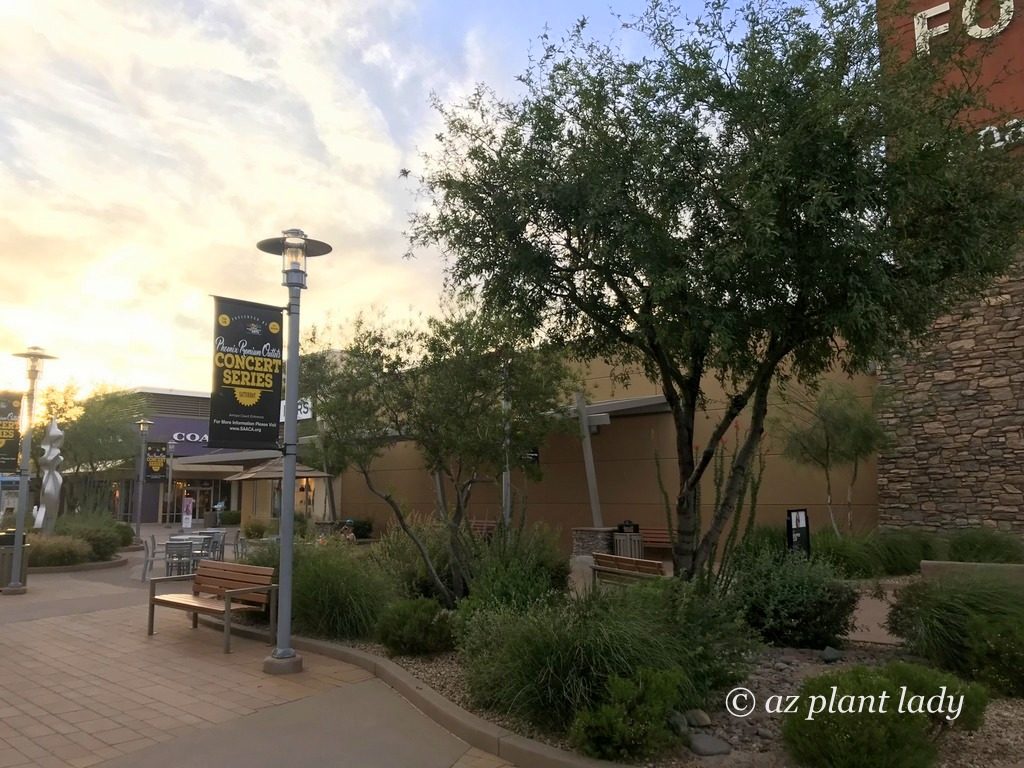
Shrubs such as Baja fairy duster (Calliandra californica), turpentine bush (Ericameria laricifolia), and chuparosa (Justicia californica) stood out. The shrubs are combined with ornamental grasses like pink muhly (Muhlenbergia capillaris).
I confess I didn’t make a very helpful shopping companion for my husband. The attractive landscaping constantly distracts me, causing me to stop frequently to take pictures.
A Shopper’s Paradise: Discovering Yellow Orchid Vines
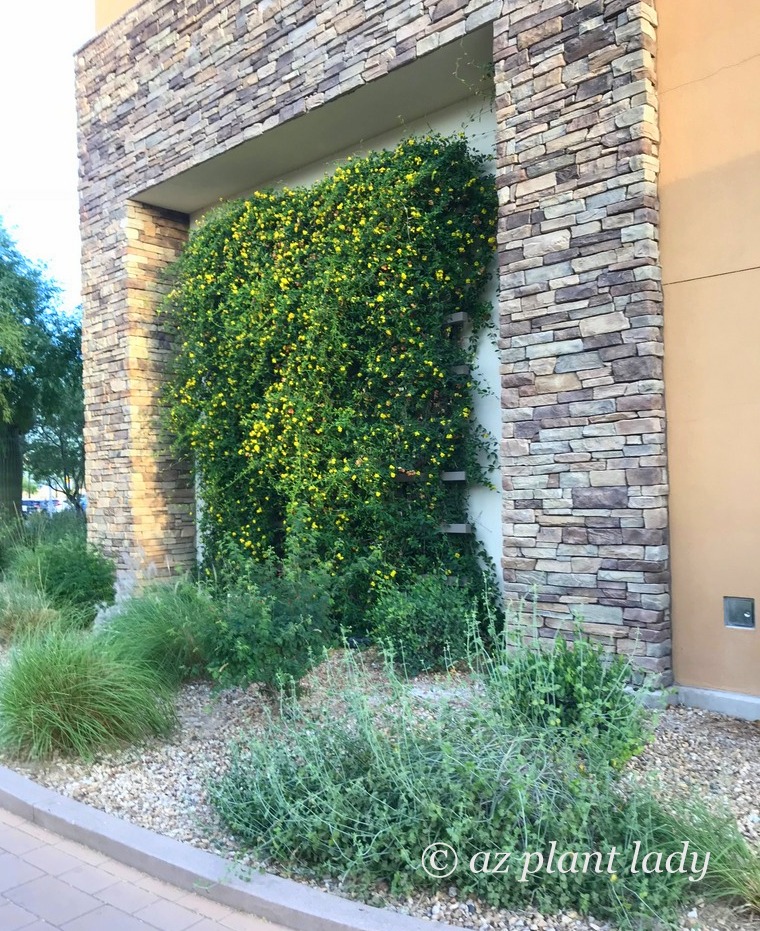
My favorite area was where a fabulous yellow orchid vine (Callaeum macropterum) was growing up a large wall.
Because of the wall’s large scale, people have planted at least three vines together. Yellow orchid vine deserves more frequent use in landscaping but is seldom observed.
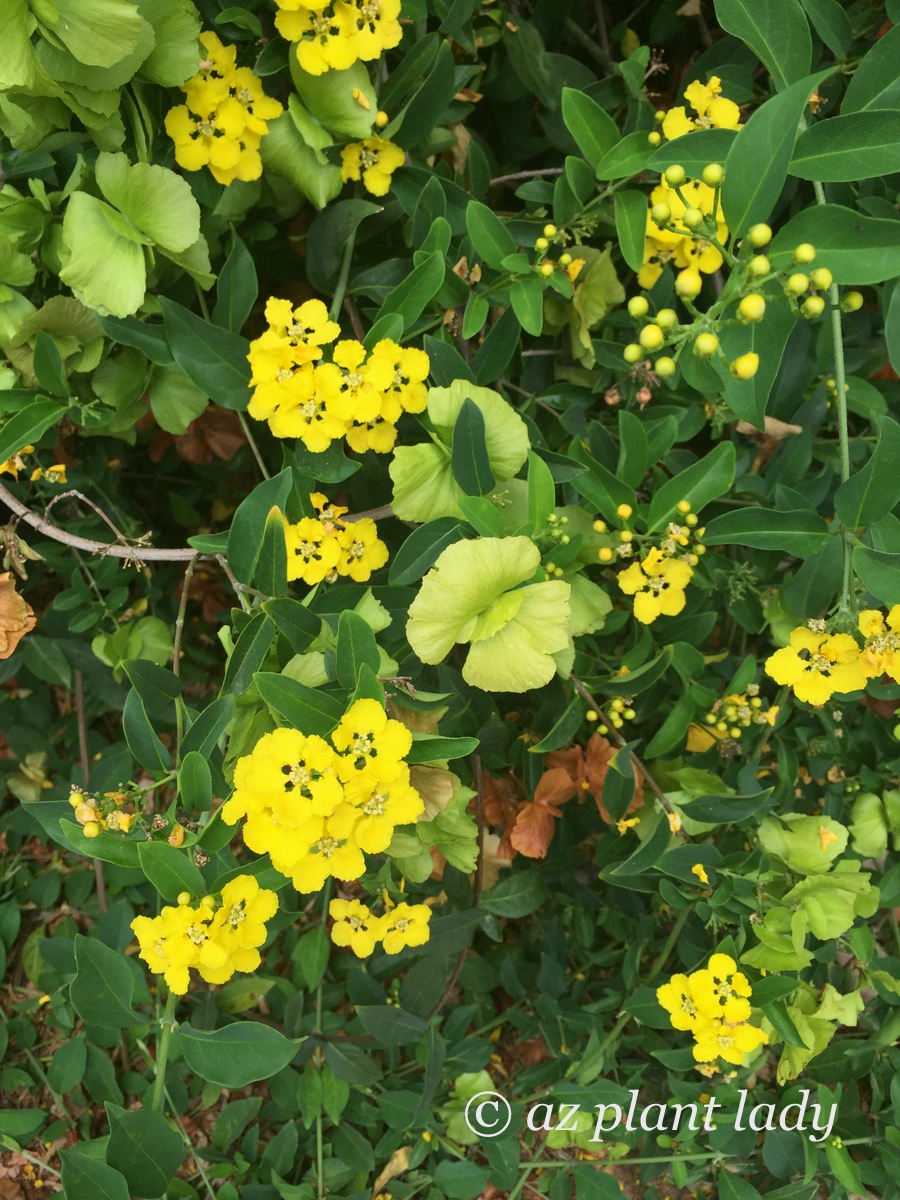
I find that it does best in morning sun or filtered shade and regular water. Its yellow flowers are lovely and form a papery seed pod that resembles a butterfly. You can learn more about this vine here. This isn’t a common vine that you’ll find at the nursery. But you can usually find them at botanical garden plant sales or your local nursery may be able to order one for you.
Explore Natural Landscaping in Phoenix Premium Outlets
If you live in the greater Phoenix area, and want to see some great examples of desert natives and natural landscaping. Definitely plan a visit to the Phoenix Premium Outlets in Chandler. And who knows? You may even find some great deals at your favorite outlet stores.
From Grass to a ‘Natural’ Desert Landscape


